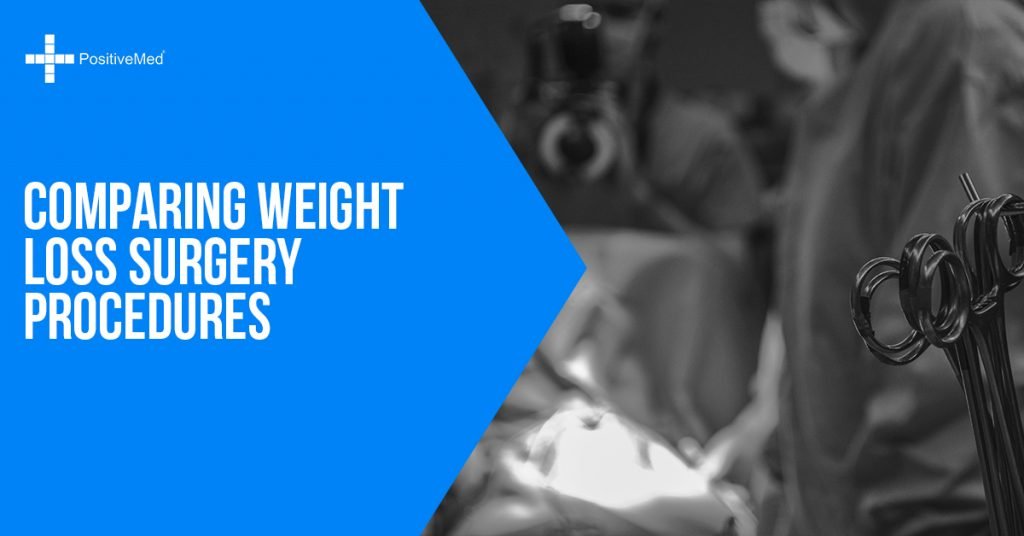Are you planning to undergo a weight loss surgery? As you research to find if it’s a good option for you, it’s paramount to understand the types of procedures involved. The best will be determined by your current health, weight loss goals, and surgeon’s recommendation. It’s important to discuss details with your doctor before reaching a verdict. Physicians only recommend surgery if you understand the risks involved and all other weight loss procedures proved futile. Here are details on all weight loss surgery procedures you should get familiar with:

Main Categories of Weight Loss Surgery
Malabsorption: Surgery bypasses or shortens the small intestines, reducing absorption of nutrients and calories in the body.
Restrictive:
Surgery confines the amount of food that the stomach can hold, making you eat less and feel satiated.
Related Link : Melt The Pounds Away Using The Japanese Weight Loss Method
Common Types of Weight Loss Surgeries
Roux-en-Y Gastric Bypass
Roux-en-Y gastric bypass involves the creation of a small pouch on the upper side of the stomach. Food can only be received in this pouch which significantly reduces the amount you can take per serving.
The surgeon then incises the small intestines below the main stomach and connects it with the upper pouch. The main stomach still continues to produce digestive juices. The section of the small intestines attached to the upper pouch is then connected to the main stomach. This ensures digestive juices continue flowing to the small intestines. Fewer calories and nutrients are absorbed because food bypasses a portion of the small intestines.
Pros:
Rapid and impressive weight loss. About 50% occurs within the first 6 months and continues for up to 2 years after the surgery.
Conditions triggered by obesity, including heart disease, diabetes, sleep apnea, and high cholesterol improves fast due to rapid weight loss.
Roux-en-Y gastric bypass results are long term. Research shows that the majority of people keep off the extra pounds for up to 10 years or more.
Cons:
Food absorption is affected which in turn impinges the flow of nutrients into the body. Reduction of calcium and iron absorption makes you susceptible to osteoporosis and anemia. This means supplementation should continue for life.
Increased risk of dumping syndrome, where food is deposited into the small intestines before it is properly digested in the stomach.
Gastric bypass surgery is considered irreversible. Only in rare cases has it been reversed.
Increased risk of infection because the procedure is complicated.
Bariatric Surgery
This covers a variety of procedures that helps in weight loss by altering the digestive system in different ways. There are four types of bariatric surgery but only three are commonly used. They include laparoscopic adjustable gastric band, gastric bypass, sleeve gastrectomy or gastric sleeve surgery, and biliopancreatic diversion with duodenal switch.
Laparoscopic Adjustable Gastric Band (LAGB)
Commonly referred to as gastric band surgery, LAGB involves insertion of a ring with an inflatable band on the upper part of a patient’s stomach to make a small pouch. It helps in reducing the size of the stomach, which limits food consumption. A balloon is filled with a saline solution inside the band. A surgeon can adjust the size of the balloon by injecting or removing the solution.
Related Link: 7 Body Parts You Can Live Without
Pros:
Doesn’t interfere with the intestines.
The band can be adjusted.
No risk of nutrient and mineral deficiencies.
It is less complicated and reversible.
In reference to a recent journal published by University of Rochester Medical Center, Rochester, NY, patients who undergo this surgery experience:
Fewer wound complications like a hernia or infection.
Less pain after surgery.
Easier lung function and breathing.
Quicker return to pre-surgical levels of activity
Cons:
Weigh loss is gradual and not effective like with other types of surgery.
Frequent visits to the hospital for band adjustment and follow-up.
In time, you have to remove or replace the band.
Gastric Sleeve Surgery
Gastric sleeve surgery, which is commonly known as sleeve gastrectomy, involves surgical procedures where most of the stomach is removed. This makes you feel satiated after eating small portions. The surgeon leaves only a banana-sized stomach after the operation.
Pros:
Rapid weight loss.
Doesn’t interfere with the intestines.
Doesn’t introduce foreign objects into the body.
The process is brief and less complicated.
Cons:
It’s complicated and irreversible.
Increased risk of surgery-related complications.
Requires medical follow-ups.
Mineral and vitamin deficiencies can occur which requires lifetime supplementation. According to the National Center for Biotechnology Information, U.S. National Library of Medicine, nutritional deficiencies are common after bariatric surgery. This is mainly due to impaired absorption and decreased oral intake
Gastric Bypass Surgery
Also called Roux-en-Y, gastric bypass surgery is a complicated process which reduces the size of the stomach and reroutes digestion. In this procedure, a surgeon staples the stomach to create a small pouch on the upper segment. This limits your food intake and makes you feel satiated quickly.
After that, the surgeon will cut the small intestine and link it directly to the small pouch. Once you eat, the food will skip most of your stomach and the small intestines. Fewer calories and nutrients are absorbed into your body because it is digesting less.
Pros:
Limits the amount of food your stomach can handle
Rapid weight loss than the gastric band.
No introduction of foreign objects into the body.
Creates changes in the stomach for hormones that reduce appetite, suppress hunger, and improve satiety.
Involves short stay in the hospital.
Cons:
Increased risk of nutrient and mineral deficiencies.
Higher risk of surgery-related complications than the gastric band.
It is difficult to reverse.
Biliopancreatic Diversion with Duodenal Switch
This is a complicated procedure where the surgeon removes about 80% of your stomach. Only the valve that releases food into the intestines is left and a section of the small intestines. A long section of the intestine is bypassed. Only a small portion of the small intestines connects your stomach with the large intestines. This surgery limits the amount of food you can eat and reduces absorption of calories and nutrients. Though very effective, doctors usually recommend this weight loss surgery to patients with a body mass index of 50 or higher.
Pros:
Results in rapid weight loss
No foreign objects are introduced in the body.
Weight loss is long term.
Cons:
Increased risk of nutrient and mineral deficiencies.
It cannot be reversed.
Surgery-related complication risks are higher.
vBloc Therapy
With vBloc Therapy, a device is implanted to periodically block the vagal nerve and stop it from sending hunger signals to your brain. This makes you feel satisfied after taking only a small serving and between meals. The vBloc Therapy is inserted under your rib cage just below the skin. The device is then attached to the vagal nerve, located just above the stomach, through wires. The entire procedure takes less than 90 minutes.
Pros:
The procedure is less complicated and doesn’t interfere with your digestive system.
No mineral and nutrient deficiencies.
Short stay at the hospital.
The device can be removed.
Cons:
Not very effective and weight loss is gradual.
In introduces foreign objects to the body.
Higher risk of surgery-related complications.
AspireAssit
This involves implantation of a tube similar to a feeding tube into the stomach. It is then attached to an external port. A device is attached to this port to drain food before digestion begins.
Insertion Procedure:
A surgeon inserts an endoscope in your mouth and passes it through to your stomach.
An incision is made in your abdomen and a wire inserted.
Using the endoscope, the surgeon grabs the wire and pulls both back out of your mouth.
The A-Tube is attached to the wire and the two are pulled back into your stomach until the tip of the tube exits your incision.
Once the incision is completely healed, you are supposed to go back to your doctor for a Skin-Port to be attached.
Pros:
Rapid weight loss. In a U.S. clinical trial, participants using AspireAssist lost 3 times as much weight as those who received diet and exercise therapy.
The procedure is simple and less complicated.
It is reversible.
No need to make lifestyle or dietary changes.
Not as expensive as bariatric surgery.
Cons:
Increased risk of mineral and nutrient deficiencies.
Introduces foreign objects into your body.
Increased risk of surgery-related complications.
Frequently visit to the hospital for follow-up.
Conclusion
If you are preparing for a weight loss surgery, discuss it with your surgeon for the least invasive procedure possible. It’s worth noting that all use the same techniques and results are varied in terms of weight loss. Weigh the benefits and risks involved with every procedure and you are better placed to decide the one that matches your needs.






